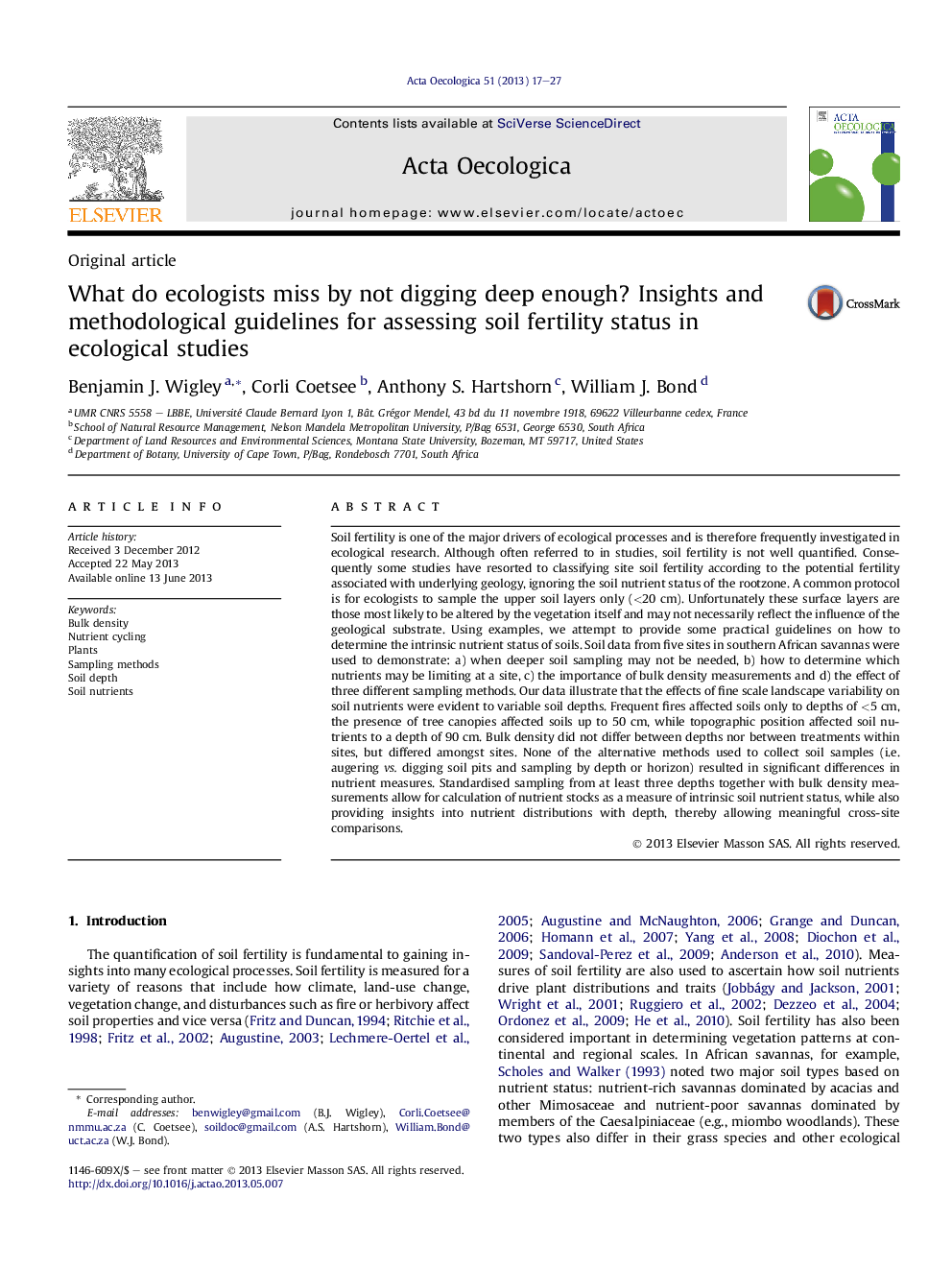| کد مقاله | کد نشریه | سال انتشار | مقاله انگلیسی | نسخه تمام متن |
|---|---|---|---|---|
| 4380780 | 1617720 | 2013 | 11 صفحه PDF | دانلود رایگان |

• Soil fertility has not been well quantified in the ecological literature.
• Studies often only sample the shallow soil layers.
• These layers do not necessarily reflect the intrinsic nutrient status at a site.
• Examples of the effects of three different ecological drivers on soils are given.
• We propose standardised sampling methods that reflect intrinsic nutrient status.
Soil fertility is one of the major drivers of ecological processes and is therefore frequently investigated in ecological research. Although often referred to in studies, soil fertility is not well quantified. Consequently some studies have resorted to classifying site soil fertility according to the potential fertility associated with underlying geology, ignoring the soil nutrient status of the rootzone. A common protocol is for ecologists to sample the upper soil layers only (<20 cm). Unfortunately these surface layers are those most likely to be altered by the vegetation itself and may not necessarily reflect the influence of the geological substrate. Using examples, we attempt to provide some practical guidelines on how to determine the intrinsic nutrient status of soils. Soil data from five sites in southern African savannas were used to demonstrate: a) when deeper soil sampling may not be needed, b) how to determine which nutrients may be limiting at a site, c) the importance of bulk density measurements and d) the effect of three different sampling methods. Our data illustrate that the effects of fine scale landscape variability on soil nutrients were evident to variable soil depths. Frequent fires affected soils only to depths of <5 cm, the presence of tree canopies affected soils up to 50 cm, while topographic position affected soil nutrients to a depth of 90 cm. Bulk density did not differ between depths nor between treatments within sites, but differed amongst sites. None of the alternative methods used to collect soil samples (i.e. augering vs. digging soil pits and sampling by depth or horizon) resulted in significant differences in nutrient measures. Standardised sampling from at least three depths together with bulk density measurements allow for calculation of nutrient stocks as a measure of intrinsic soil nutrient status, while also providing insights into nutrient distributions with depth, thereby allowing meaningful cross-site comparisons.
Journal: Acta Oecologica - Volume 51, August 2013, Pages 17–27